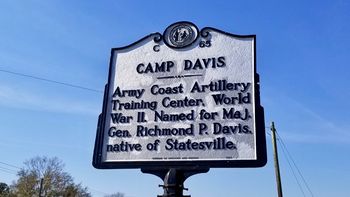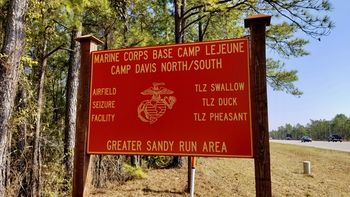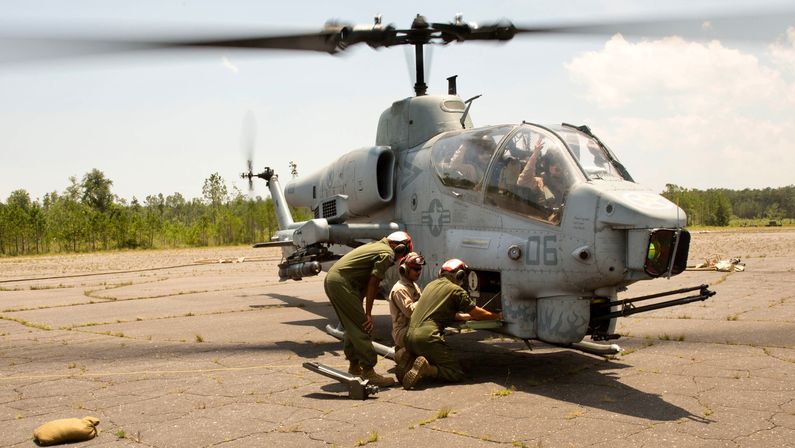Camp Davis (4)
|
World War IIConstruction began on Camp Davis on 16 December 1940 and by 6 Apr 1941, the first troops arrived. By August 1941 the camp held some 20,000 officers and enlisted men. Intended as a Coast Artillery training post, the camp provided gunnery training on anti-aircraft guns (90mm), seacoast guns (155mm), AA radar, and barrage balloons. The training center was located in present-day Holly Ridge, Onslow County, North Carolina. The Camp came to have some 3,000 buildings, most were the standard WWII two-story, wooden-frame barracks and mess halls but the base also had an 800-bed hospital and four movie theaters. WWII Camp Davis covered over 46,000 acres with off-site firing ranges at:
Black troops were posted at Camp Gibbins. The Army's Antiaircraft Artillery Officer Candidate School was located at Camp Davis. This school offering advanced training in radar, communications, and tactics. The Camp Davis Army Airfield was built in 1943 with two 5000-foot paved runways. The U.S. War Department began winding down AAA training in early 1944 and the AAA School and AAA Board transferred to Fort Bliss, Texas in the fall of 1944. The base was closed in October 1944 but was reactivated in 1945 by the Army Air Corps as a convalescent hospital and reportedly as a German POW camp that held some 550 prisoners from March 1944 to the spring of 1946. On 17 Feb 1946, Camp Davis was closed. Post World War IIIn 1948 Camp Davis was declared surplus and was dismantled for salvage and sale. In 1954, the U.S. Marine Corps took out a lease from the International Paper Company for about 955 acres that included the old Camp Davis airfields & surrounding area. The Marine Corps now uses Camp Davis as a Marine Corps Outlying Landing Field for helicopter units based at nearby Marine Corps Air Station New River. Current StatusMarine Corps Outlying Landing Field (MCOLF) Camp Davis provides a local landing field for a variety of aircraft training missions. The field is currently used by the AH-1W “Super Cobra,” CH-53E “Super Stallion,” MV-22 “Osprey,” UH-1N “Iroquois (Huey),” and, on occasion, the KC-130J “Hercules.” The UH-1Y also uses the airfield.
See Also: Sources:
Links:
Visited: 16 Mar 2018
| ||||||


